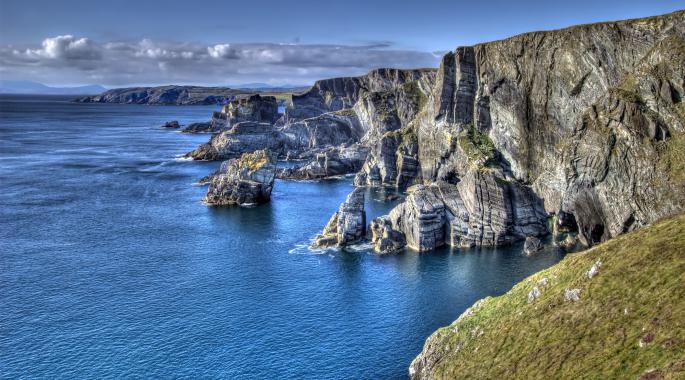
We know more about the dark side of the moon and the surface of Mars than we do about our deep ocean environments.
However, Irish participants in an EU funded project are shedding light on the darkest depths of the North Atlantic maritime region.
The ATLAS project, led by the University of Edinburgh, with the National University of Ireland Galway, University College Dublin and Irish SME AquaTT UETP Ltd all participating, is mapping the North Atlantic maritime region to help manage marine resources in an efficient, safe and sustainable way.
“The ATLAS project was put together in response to a broad call from the European Commission to improve our understanding of the balance between preservation and exploitation in the North Atlantic ecosystem,” says project coordinator Murray Roberts of the School of Geosciences at the University of Edinburgh.
ATLAS research activities mainly focus on waters where deep sea ecosystems are coming under increased pressure from human activities.
A number of case studies have been chosen to represent the different types of marine environments found in the North Atlantic.
One of these, the Porcupine Seabight (PSB) off the west coast of Ireland, is an ideal candidate to develop Maritime Spatial Planning (MSP) approaches within ATLAS.
Dr Anthony Grehan of NUI Galway is leading the MSP work in the ATLAS project.
“MSP is considered a key enabler to promote ecosystem based sustainable resource management in the deep-sea,” he said.
The PSB is an area that has been intensely researched for decades. The importance of its cold-water coral reefs only came to prominence at the beginning of this century.
The area contains carbonate mounds that can reach heights of hundreds of meters.
The Porcupine Seabight’s Belgica Mound province is the first offshore Special Area of Conservation (SAC) in the EU, as designated by the Irish authorities under the European Union’s Habitats Directive.
In recent times, the PSB has experienced an increase in oil and gas exploration interest and there are several other stakeholders including fishing, telecommunications, scientific research and conservation that can benefit from the development of MSP approaches within ATLAS.
The outcomes and insights from ATLAS will inform the 2020 Irish national maritime spatial plan and contribute to international deliberations on the drafting of a United Nations regulation to protect biodiversity beyond national jurisdictions – the so called UN BBNJ regulation.
- Project duration
- 1 Jun 2016 - 31 May 2020
- Project locations
- Co. Galway, Ireland
- Overall budget
- €9 100 320
- Project website
- Atlas
Stakeholders
Coordinators
Heriot-Watt University
- Website
- https://www.hw.ac.uk/
Participants
University College Dublin
National University of Ireland, Galway
- Website
- http://www.nuigalway.ie/
AquaTT Limited
- Website
- https://www.aquatt.ie/
